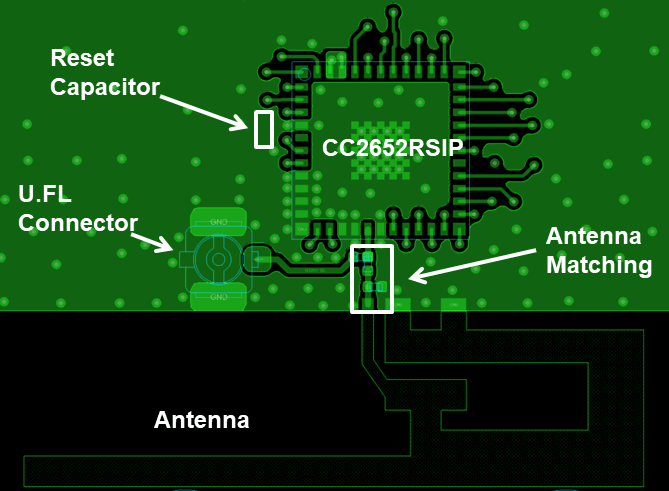ZHCSNG8B February 2021 – September 2022 CC2652RSIP
PRODUCTION DATA
- 1 特性
- 2 应用
- 3 说明
- 4 Functional Block Diagram
- 5 Revision History
- 6 Device Comparison
- 7 Terminal Configuration and Functions
-
8 Specifications
- 8.1 Absolute Maximum Ratings
- 8.2 ESD Ratings
- 8.3 Recommended Operating Conditions
- 8.4 Power Supply and Modules
- 8.5 Power Consumption - Power Modes
- 8.6 Power Consumption - Radio Modes
- 8.7 Nonvolatile (Flash) Memory Characteristics
- 8.8 Thermal Resistance Characteristics
- 8.9 RF Frequency Bands
- 8.10 Bluetooth Low Energy - Receive (RX)
- 8.11 Bluetooth Low Energy - Transmit (TX)
- 8.12 Zigbee and Thread - IEEE 802.15.4-2006 2.4 GHz (OQPSK DSSS1:8, 250 kbps) - RX
- 8.13 Zigbee and Thread - IEEE 802.15.4-2006 2.4 GHz (OQPSK DSSS1:8, 250 kbps) - TX
- 8.14 Timing and Switching Characteristics
- 8.15 Peripheral Characteristics
- 8.16 Typical Characteristics
-
9 Detailed Description
- 9.1 Overview
- 9.2 System CPU
- 9.3 Radio (RF Core)
- 9.4 Memory
- 9.5 Sensor Controller
- 9.6 Cryptography
- 9.7 Timers
- 9.8 Serial Peripherals and I/O
- 9.9 Battery and Temperature Monitor
- 9.10 µDMA
- 9.11 Debug
- 9.12 Power Management
- 9.13 Clock Systems
- 9.14 Network Processor
- 9.15 Device Certification and Qualification
- 9.16 Module Markings
- 9.17 End Product Labeling
- 9.18 Manual Information to the End User
- 10Application, Implementation, and Layout
- 11Environmental Requirements and SMT Specifications
- 12Device and Documentation Support
- 13Mechanical, Packaging, and Orderable Information
10.3.2 RF Layout Recommendations
It is critical that the RF section be laid out correctly to ensure optimal module performance. A poor layout can cause low-output power and sensitivity degradation. Figure 10-2 shows the RF placement and routing of the CC2652RSIP module with the 2.4-GHz inverted F antenna.
 Figure 10-2 Module Layout
Guidelines
Figure 10-2 Module Layout
GuidelinesFollow these RF layout recommendations for the CC2652RSIP module:
- RF traces must have a chararcterisitc impedance of 50-Ω.
- There must be no traces or ground under the antenna section.
- RF traces must have via stitching on the ground plane beside the RF trace on both sides.
- RF traces must be as short as possible.
- The module must be as close to the PCB edge in consideration of the product enclosure and type of antenna being used.